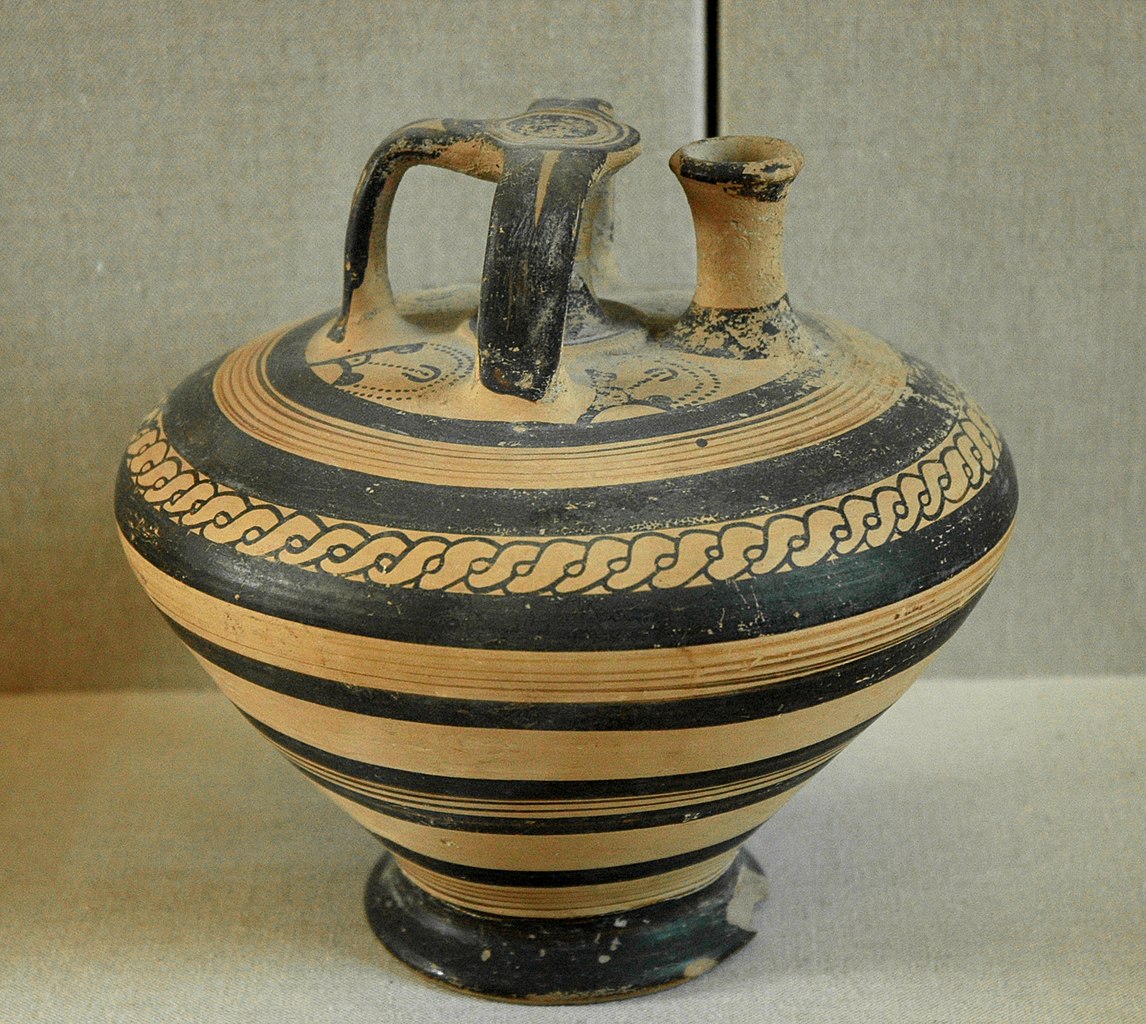
The Mycenaean Greeks had a rich and powerful civilization which thrived in the Bronze Age. However, what was the extent of their trade relations around the Mediterranean? How far did they actually go, and what groups did they trade with? These are the questions of focus here.
The period of Mycenaean trade
First, let us establish the period in question. The Mycenaean civilization first emerged in approximately 1600 BCE. This was the Middle Bronze Age. This civilization continued through the Late Bronze Age, finally coming to an end in the twelfth century BCE.
During this time, there were numerous palaces in city-states all over Greece. It appears that the city-state of Mycenae was dominant at this time. To what degree it exerted control over other city-states is uncertain.
We do have written records, but they tend to be of an administrative nature rather than a narrative nature. Thus, we do not know much about the activities of these city-states and their relationship with each other, but we do know that they were incredibly rich and had vast amounts of material wealth.
Certainly, such a rich civilization must have had good trade relations with surrounding regions. Indeed, there is extensive archaeological evidence of this.
An overview of Mycenaean trade
The primary way in which historians make conclusions about the extent of trade is by looking at evidence uncovered by archaeologists. The most common trace of trade is pottery fragments. Pottery, of course, is needed to hold other items, and it is also valuable in its own right.
Pottery from Mycenaean Greece has been found throughout the Eastern and Central Mediterranean. Archaeologists have found it in Greece, Palestine, Syria, Asia Minor, the north coast of Africa, Italy, and on various islands.
There is also some quite limited evidence for Mycenaean trade with Iberia (present-day Spain and Portugal), indicating the presence of Mycenaean Greek materials on the Iberian Peninsula, and confirming the existence of Mediterranean trade prior to the arrival of the Phoenicians.
Of course, it is impossible to say definitively whether any given piece of pottery was transported directly from Greece to its final destination. It could be that it passed through several hands before arriving at the location where it was subsequently found by archaeologists.
However, there were certain primary locations with which the Mycenaean Greeks traded in the Bronze Age.

Egypt
One of the places which does seem to have had direct trade links with Mycenaean Greece is Egypt. We can be certain of this because they actually described messengers from Greece coming to Egypt to bring gifts so as to establish diplomatic links.
In these texts, the Egyptians called the Greeks the ‘Tanaju.’ This appears to be the Egyptian form of ‘Danaoi,’ or Danaans, the name of one of the Greek tribes.
Trade links with Egypt were evidently quite strong by virtue of these direct diplomatic missions. This enabled the Egyptians to have a relatively profound knowledge of Mycenaean Greece. On the Mortuary Temple of Amenhotep III from the 14th century BCE, there is a list of various Greek cities, including Mycenae and Messenia.
Mycenaean pottery made its way right down the Nile River as far as Nubia. However, its unclear whether Mycenaean Greeks themselves took it that far. It likely reached those areas through internal Egyptian traders.
Palestine
In contrast to the previous entry, comparatively little is known regarding connections between the Mycenaean Greeks and Bronze Age Palestine, or Canaan. This is because we have very few written records from this location. Nonetheless, archaeological evidence makes it clear that the Greeks traded extensively with this region.
In fact, there is a much, much higher concentration of Mycenaean pottery in Bronze Age Palestine than in Egypt. While we do not know anything about attempted diplomatic links, as we do for Egypt, it is clear that the Mycenaean Greeks enjoyed good relations with the city-states of this region.
It is possible that this profound link between Mycenaean Greece and Palestine is related to the evidence that people from the Aegean had settled in that region in the Bronze Age. This may have encouraged Mycenaean Greeks to trade there since they were essentially their old customers anyway.
Syria
Archaeologists have also found Mycenaean pottery at several important sites in Syria, such as Ugarit. Furthermore, a shipwreck dating to the Bronze Age has provided us with valuable information about Mycenaean trade in that region.
The shipwreck in question is the Uluburun shipwreck. Archaeologists have dated this to about 1320 BCE. The ship was constructed with wood from the famous trees of Lebanon, adjacent to what is now Syria. This provides good evidence that it came from that region.
The ship was full of copper and tin, evidently to make bronze. It also had various other artifacts onboard, including Mycenaean pottery. By examining what appear to be personal artifacts, the archaeologists who uncovered this site have concluded it had a Syro-Canaanite crew. Furthermore, they have also concluded that some of the passengers onboard were from Mycenaean Greece.
See all the latest news from Greece and the world at Greekreporter.com. Contact our newsroom to report an update or send your story, photos and videos. Follow GR on Google News and subscribe here to our daily email!



